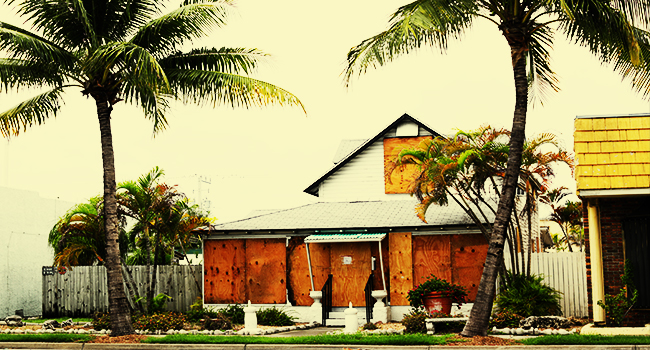
Right as we’re beginning to come to grips with the full damage from Hurricane Harvey, Hurricane Irma is set to hit the Caribbean and looks more and more likely to make landfall in Florida. Irma is even stronger than Harvey, a Category 5 to Harvey’s Category 4. But what does that mean? How do hurricanes get started? And what can we do to limit the damage?
A hurricane — also called a typhoon or a cyclone — is essentially the water cycle you learned about in elementary school, in overdrive. Hurricanes generally need six factors to kick into gear: A warm ocean, high humidity in the troposphere, low wind shear (that is, the wind is mostly flowing in one direction), an unstable atmosphere, enough Coriolis force to form a vortex, and a seed storm. That seed storm begins pulling water from the ocean, which is easy to do since the atmosphere is allowing vertical motion. There are vortexes called gyres in the ocean, and as water is pulled up from them, the hurricane begins to spin. Remember convection: Warm things rise, cold things drop, so the ocean is naturally inclined to keep feeding water into the hurricane as long as it’s warm enough. This is a particular problem with Irma:
https://twitter.com/PeterGleick/status/905098425561112576
Hurricanes will begin following the wind, feeding off the warm ocean, and, as it travels, the winds in the vortex pick up speed. Hurricanes can sustain themselves until they either stay on land long enough to run out of fuel, or stumble into colder waters less able to feed the hurricane. Hurricanes are generally sorted into categories in the US, based entirely on their wind speed, using the Saffir-Simpson hurricane scale. Anything under 74 miles an hour is a tropical storm, and anything over that is a hurricane. The scale tops out at five, with winds over 158 miles an hour.
Why only wind speed? It’s difficult to predict the exact damage caused by rain, storm surge, and other problems that hurricanes create. Harvey, a Category 4 storm, dropped 49 inches of rain, while Katrina only dropped five to ten inches of rain; Katrina killed so many people thanks to the storm surge and a failure of public works designed to protect the city. Similarly, Katrina was far more fatal than Harvey, so far. So Irma could completely flood Florida or it could offer only relatively minor flood damage. At the moment, there’s no way to know for sure.
Therein, of course, lies the whole problem. A hurricane can come along and wreck a few things, and Irma will almost certainly destroy property, but nothing truly serious that can’t be rebuilt, with lives saved by a thorough, orderly evacuation. Or, like Harvey and Katrina, it could break records with rainfall, overwhelm inadequate safety systems, or otherwise cause damage in some unexpected way. It’s not clear just what Irma will bring. But it’s safe to say, on top of Harvey and the Los Angeles wildfires, that it’s another disaster the US doesn’t need.
Nor will it be the last. Hurricanes have seasons, and for the Atlantic, it starts June 1st. As hurricanes are named in alphabetical order, we’ve had nine hurricanes so far. Hurricane season, in America, doesn’t end until November 30th. And last year’s hurricane season, one of the most active on record, saw fifteen storms, including Hurricane Matthew, one of the deadliest storms on record. In short, be ready to donate, contribute, evacuate, and otherwise help. More storms are coming, and more people are going to need those of us outside of the hurricane zone to pitch in.
